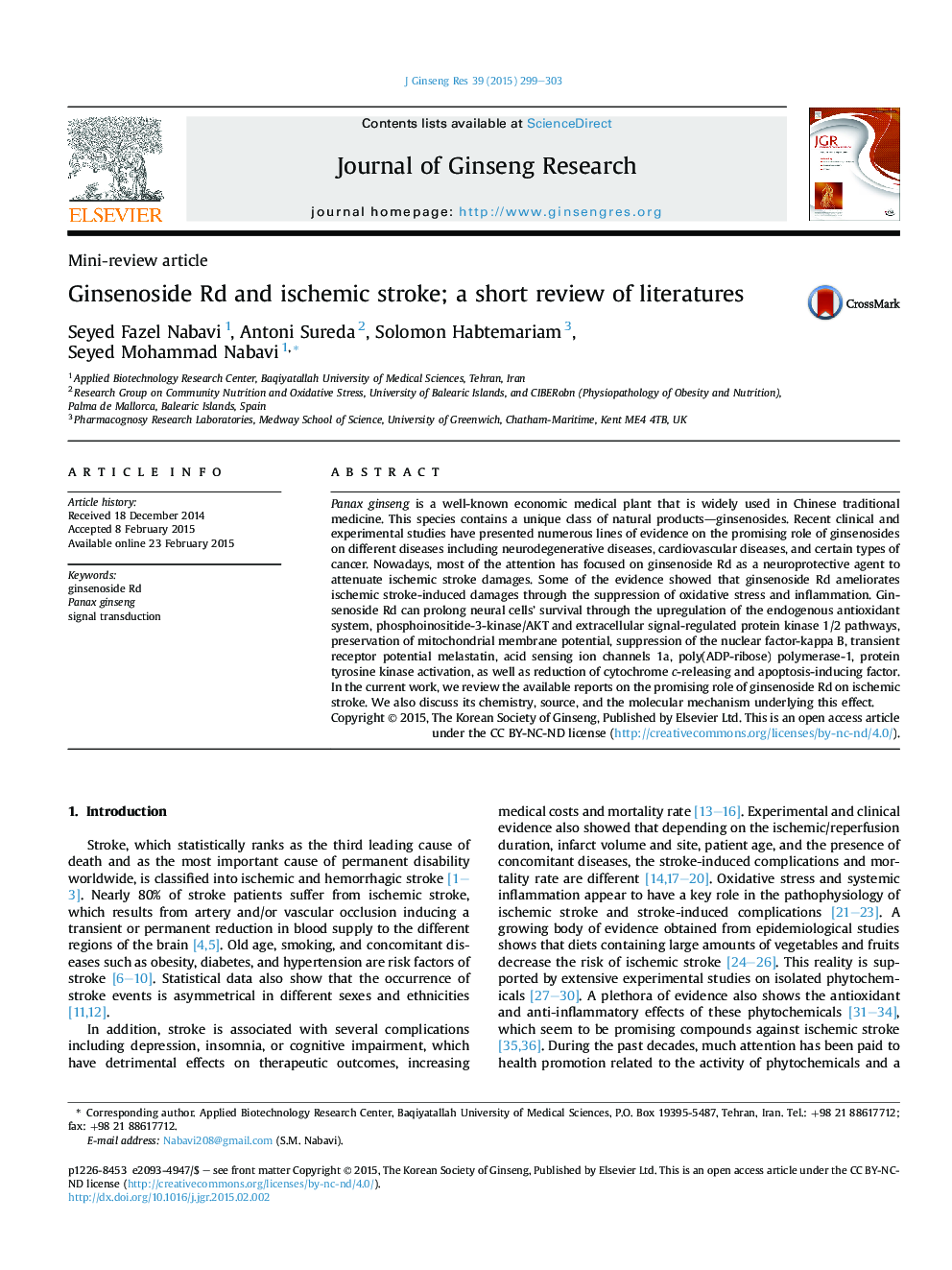| Article ID | Journal | Published Year | Pages | File Type |
|---|---|---|---|---|
| 3099289 | Journal of Ginseng Research | 2015 | 5 Pages |
Panax ginseng is a well-known economic medical plant that is widely used in Chinese traditional medicine. This species contains a unique class of natural products—ginsenosides. Recent clinical and experimental studies have presented numerous lines of evidence on the promising role of ginsenosides on different diseases including neurodegenerative diseases, cardiovascular diseases, and certain types of cancer. Nowadays, most of the attention has focused on ginsenoside Rd as a neuroprotective agent to attenuate ischemic stroke damages. Some of the evidence showed that ginsenoside Rd ameliorates ischemic stroke-induced damages through the suppression of oxidative stress and inflammation. Ginsenoside Rd can prolong neural cells' survival through the upregulation of the endogenous antioxidant system, phosphoinositide-3-kinase/AKT and extracellular signal-regulated protein kinase 1/2 pathways, preservation of mitochondrial membrane potential, suppression of the nuclear factor-kappa B, transient receptor potential melastatin, acid sensing ion channels 1a, poly(ADP-ribose) polymerase-1, protein tyrosine kinase activation, as well as reduction of cytochrome c-releasing and apoptosis-inducing factor. In the current work, we review the available reports on the promising role of ginsenoside Rd on ischemic stroke. We also discuss its chemistry, source, and the molecular mechanism underlying this effect.
